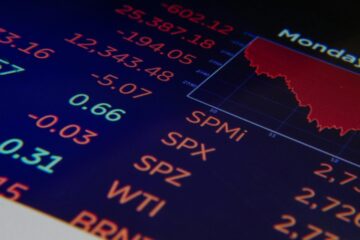Introduction
We have touched upon the new trend of ESG factors shaping investors preferences in the “Green Bonds Boom” article published in the last semester. This time around we will try to analyze how environmental, social and governance responsibility may be driving equities, in order to see what will the future of asset allocation look like as many institutional and retail investors seem to change their lenses.
ESG in 2019
First, let’s break down what each component of the commonly used ‘ESG approach’ covers and which elements of companies’ actions are analyzed. The environmental aspect includes firm’s carbon footprint, environmental impact and disclosure, as well as efforts to minimalize pollution and emissions. Social responsibility stands for e.g. management practices, diversity and philanthropy. The last, but currently most followed factor is governance responsibility, which accounts for compensation, shareholder rights, but also shareholder’s relationship with management.
In January, Larry Fink, BlackRock CEO, made headlines after issuing his letters to CEOs and clients in which he has announced a large shift towards a new investment standard based on sustainability and ESG factors, a view which received wide support after the announcement. According to its critics though, it is a view that neglects shareholder primacy and instead roots for a ‘stakeholder capitalism’ approach in which profits and value are not maximized, as the company aims to compromise serving its all stakeholders. On the other hand, its proponents claim that it is an approach basing on the notion that in the long run a lack of stakeholder perspective may in turn affect shareholders’ returns.
Even though we might be familiar with what do the letters in ESG stand for in theory, by having a closer look at BlackRock’s new plan we should be able to see how these factors can tangibly affect asset allocation decisions.
First of all, it involves the expectation that companies will report to their investors following guidelines set by the Task Force on Climate-related Financial Disclosure and the Sustainable Accounting Standards Board. Second, BlackRock plans to implement sustainability approach in all of its strategies, starting with thermal coal divestment in their actively managed funds. BlackRock looks to exit exposure to any firm generating above 25% revenue from thermal coal by mid-2020 and to report sustainability risk and carbon footprint to its investors. Finally, the firm plans to double their sustainability and ESG orientated ETF offering in 2020, add fossil-fuel-free portfolios and provide new actively managed global energy transition and social impact portfolios. All of this may further increase availability of ESG-focused strategies to both institutional and retail investors, leading to a bigger inflow of capital aimed at sustainability based strategies. As found in a recent State Street study, ‘50% of retail investors want their financial advisors to communicate more about ESG investing so they can align their investments with their personal values.’ A trend to most likely continue as wealth transfers to younger generations.
This may seem like a new addition, but it is worth noting that when looking at fund inflows the trend started much earlier, in 2019, as the numbers almost quadrupled on YoY basis. Investors poured close to $21 bn into ESG and sustainability focused ETFs and open-end funds, leading to creation of an around 30% premium on top vs. bottom ESG rated companies basing on their forward P/E ratios.

Source: Morningstar
This may partly be attributed to investors’ sentiment towards growth stocks which have strongly outperformed their value peers in the last decade. Other, very often overlooked factor is that when breaking down the S&P 500 market value structure, the share of intangible assets like intellectual property rights and reputation has been steadily on the rise, thus growth of value related to ESG performance might not be completely irrational. On top of that, cases like Volkswagen’s ‘Dieselgate’ prove that the risk connected to sudden change in ESG outlook can lead to large market value slips.

Source: IP Closeup report
Nonetheless, the ESG premium and price discrepancy is becoming more clear, leading to concerns about a bubble forming in sectors such as wind and solar energy, hydrogen or fuel-cell industries. On top of that, recent papers find that institutional investors are more reluctant to sell overpriced, but highly ESG rated companies, while missing on a lot of risk-adjusted returns in underpriced companies with lower ESG ratings. A 2019 paper by University of Rome scholars found that indeed there exists a negative ESG premium and that ‘a one standard deviation decrease in ESG scores is associated with an increase of 13 basis points in monthly expected returns.’ Thus the most logical approach seems to be exploiting these differences, as well as investing in transitioning companies, as the ESG premium might ‘fuel’ their growth.
At the same time, another fear connected to that is that some companies may be trying to surf the wave by picturing themselves as much more ESG oriented than they really are – a process called ‘greenwashing’.
ESG scoring
Thus, in order for the system to function well there must be some form of standardization of measurement methodology. In the end, in order make conscious decisions investors should have a reliable benchmark, aimed at reducing the probability of investing in companies with ‘green’ marketing skills and facilitating finding ones that actually act according to ESG principles . However as of now, the market lacks a well-established standard of actually telling these two types apart, which is reflected in the most commonly held stocks by sustainable equity funds. In many cases the managers do not want to underperform the general market, so instead of picking ESG ‘stars’ they often choose to simply exclude companies which score lower on the ESG spectrum, very often leading to an indistinguishable tech-heavy fund composition.

Source: WSJ
Looking at the graph above one may argue that the issue connected with ESG allocation is indeed the presence of ‘greenwashing’, however done not by the firms but by the providers of these investment products. Thus, according to industry professionals, a strict and a reliable framework is needed, because lack of criteria or a potential bubble forming around the funds themselves can in the longer run inhibit ESG growth. Recently however, both Bloomberg and Refinitiv added their own ESG scoring functions, making a move towards greater transparency and comparability of companies’ performance in this aspect. Bloomberg’s ESG <GO> function is based on RobecoSAM’s data, which is one of the main ESG ratings providers among others like KLD, Sustainalytics, Video-Eiris and Asset4, as well as Dow Jones Sustainability Index, FTSE4Good Index and MSCI ESG.
On the other hand, a recent MIT Sloan’s paper titled ‘Aggregate Confusion: The Divergence of ESG Ratings’ found that the correlation between those agencies’ scores was just 0.61, falling short of 0.99 correlation found in credit rating agencies’ scores. This ‘noise’ is mainly due to different scopes and weightings, as well as a constantly changing outlook on importance of certain aspects, which undoubtedly can generate even more confusion for investors and managers looking to navigate the ESG market.
How can ESG add value
Disregarding the current situation of ESG scoring and funds’ asset allocation, let’s discover how ESG can actually add value in some areas. According to a 2019 MSCI paper, while many acknowledge the existence of the ‘ESG premium’ they disregard fundamental factors that may explain it. The research suggest that there are three channels in which value can be added through better ESG performance.
First, the research suggests that high ESG-scoring companies have higher competitive advantage, stemming from better resource allocation, human management and better long-term business plans, as a result generating higher profitability and subsequently dividends, which in turn increase future expected cashflows and most ESG oriented investors seem to display a long-term investment horizon.
Second, top ESG performers seem to implement better risk management strategies, as well as better internal and supply chain compliance standards, thus leading to fewer corruption, fraud or litigation cases, seen as company-specific downside risk.
Third, companies scoring high on ESG seem to have a lower vulnerability to systematic market shocks, when compared to less ESG-efficient peers, resulting in lower market risk with respect to risk factors and as a result lower cost of capital available to them, once again resulting in higher DCF valuation. Due to this multi-channel nature, longer cycle and the fact that ESG ratings generally show lower intensity than traditional factors it should not be considered on par with traditional well-established factors like low-volatility or momentum.
Certainly more research on ESG investing is needed, helping us assess its long term effects on value creation, risk and pricing. However, considering that it is a trend most likely to continue, we can already claim it will be one of the biggest topics from this year onwards as the new generations of investors join the market.



0 Comments